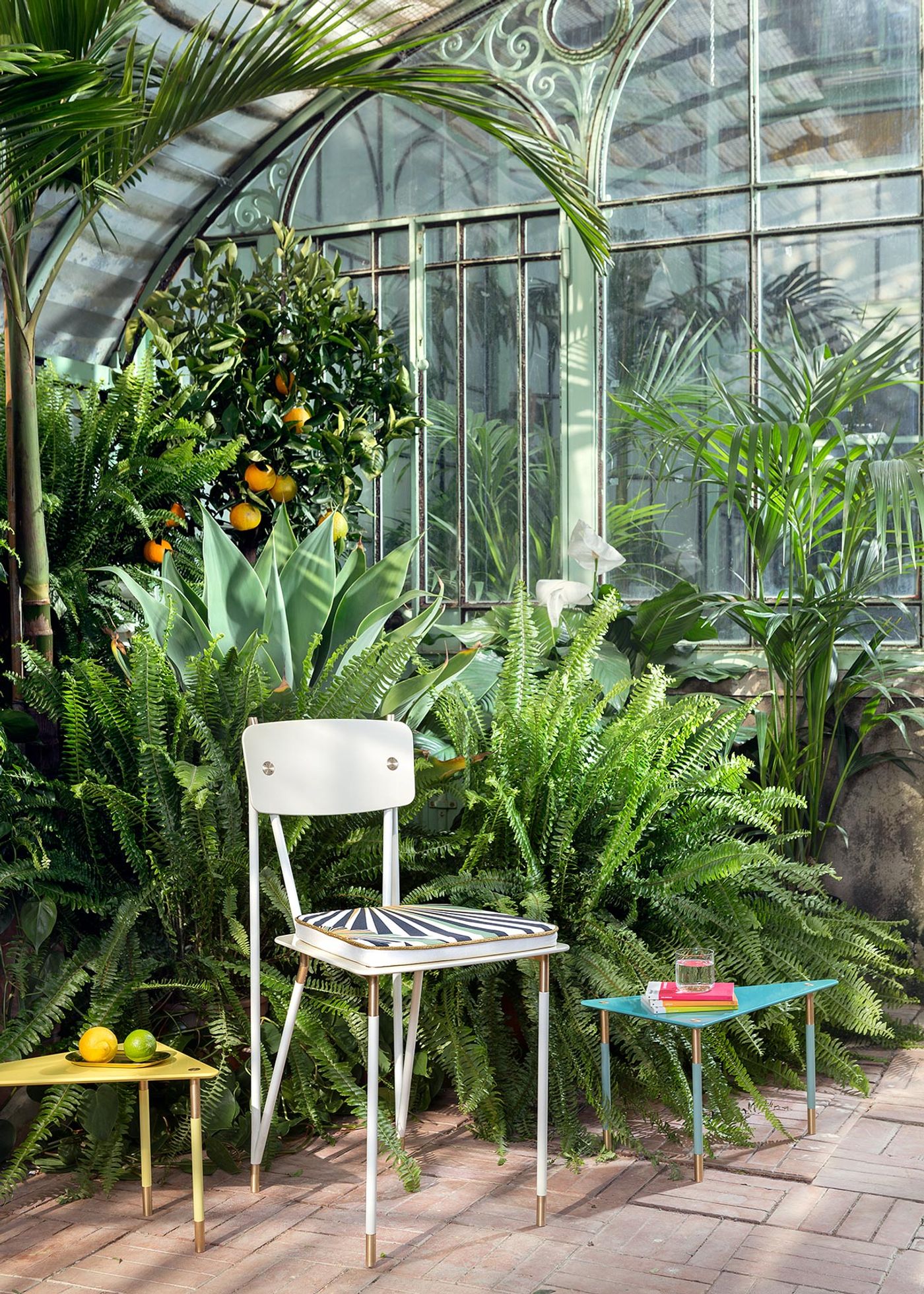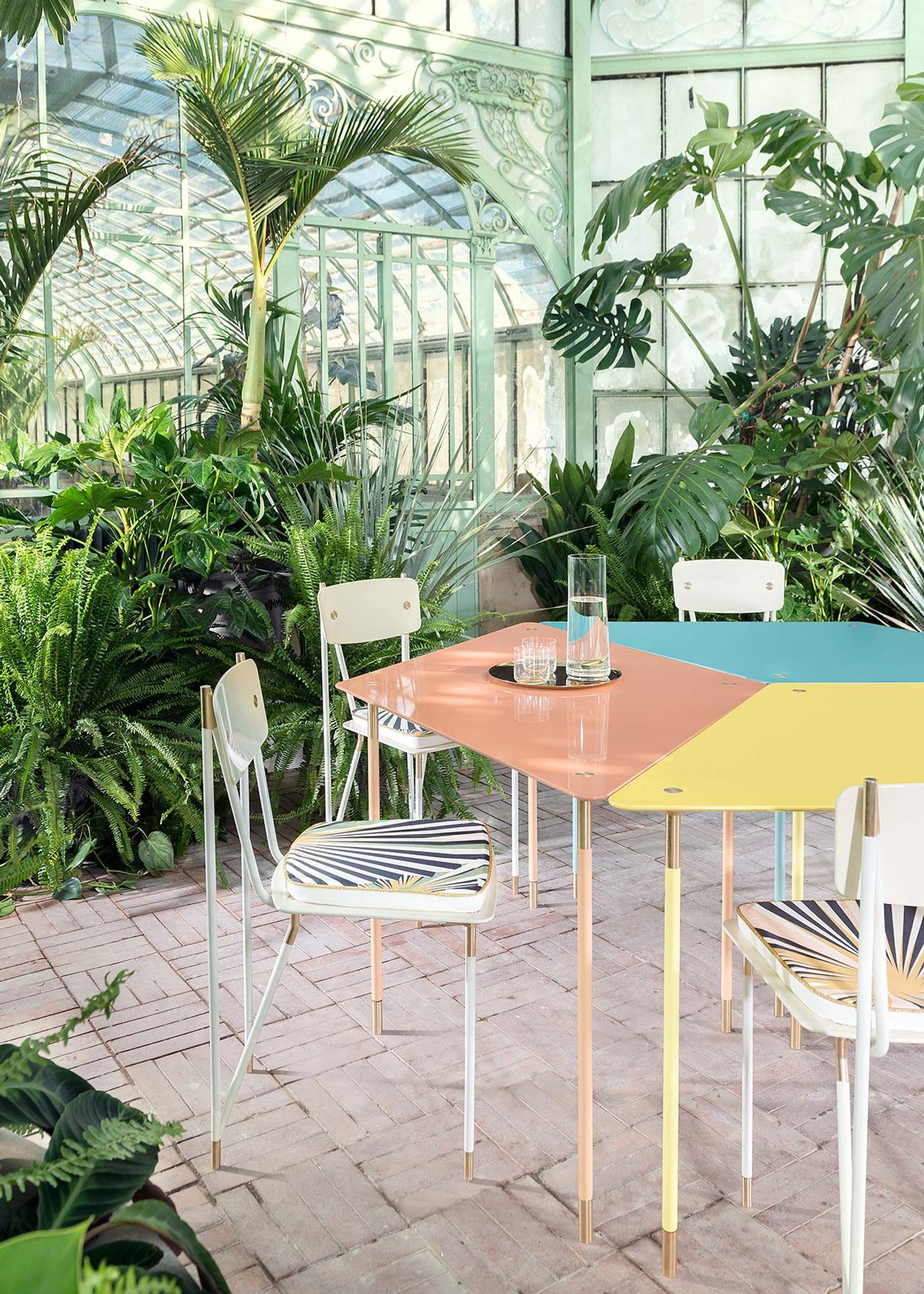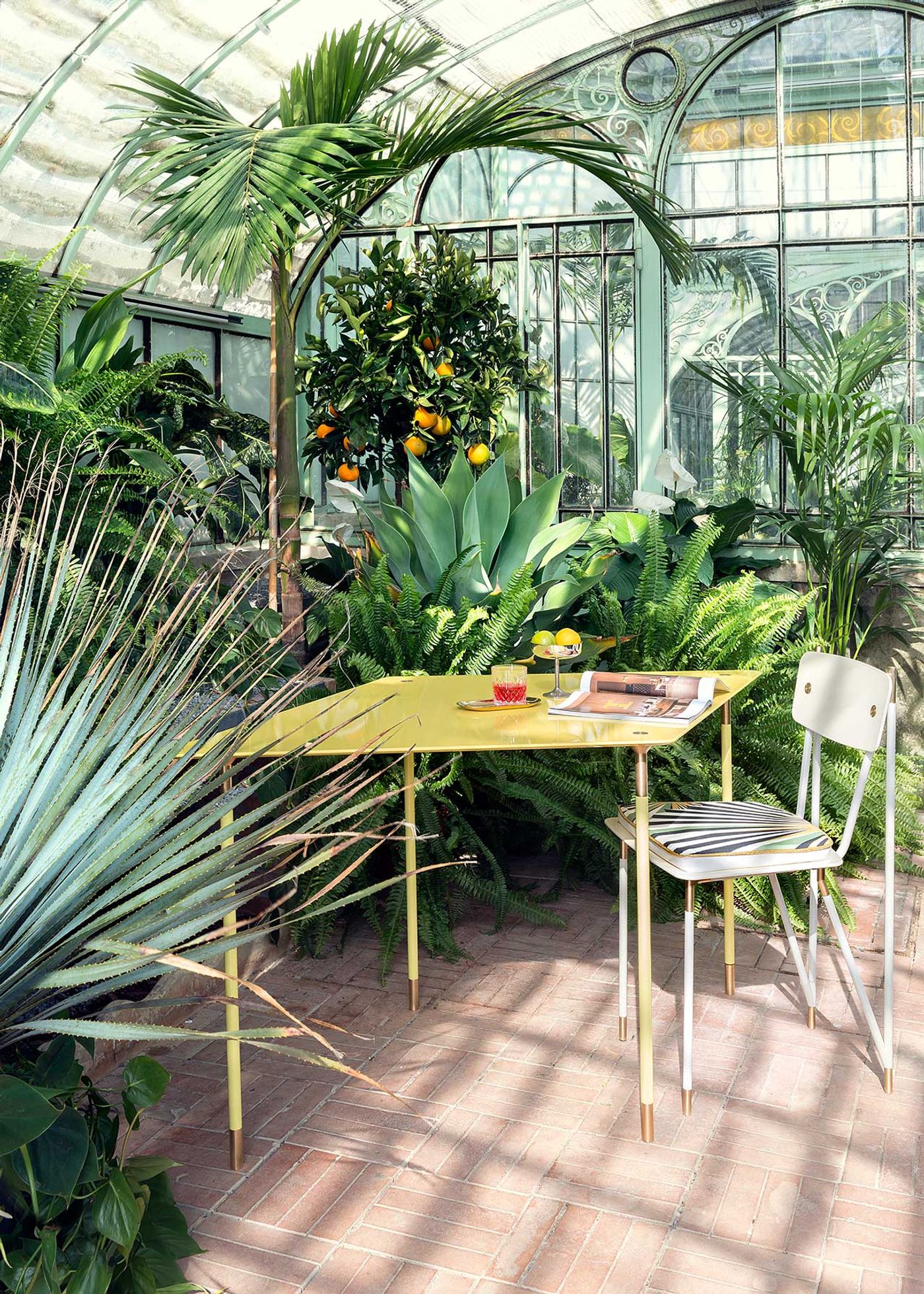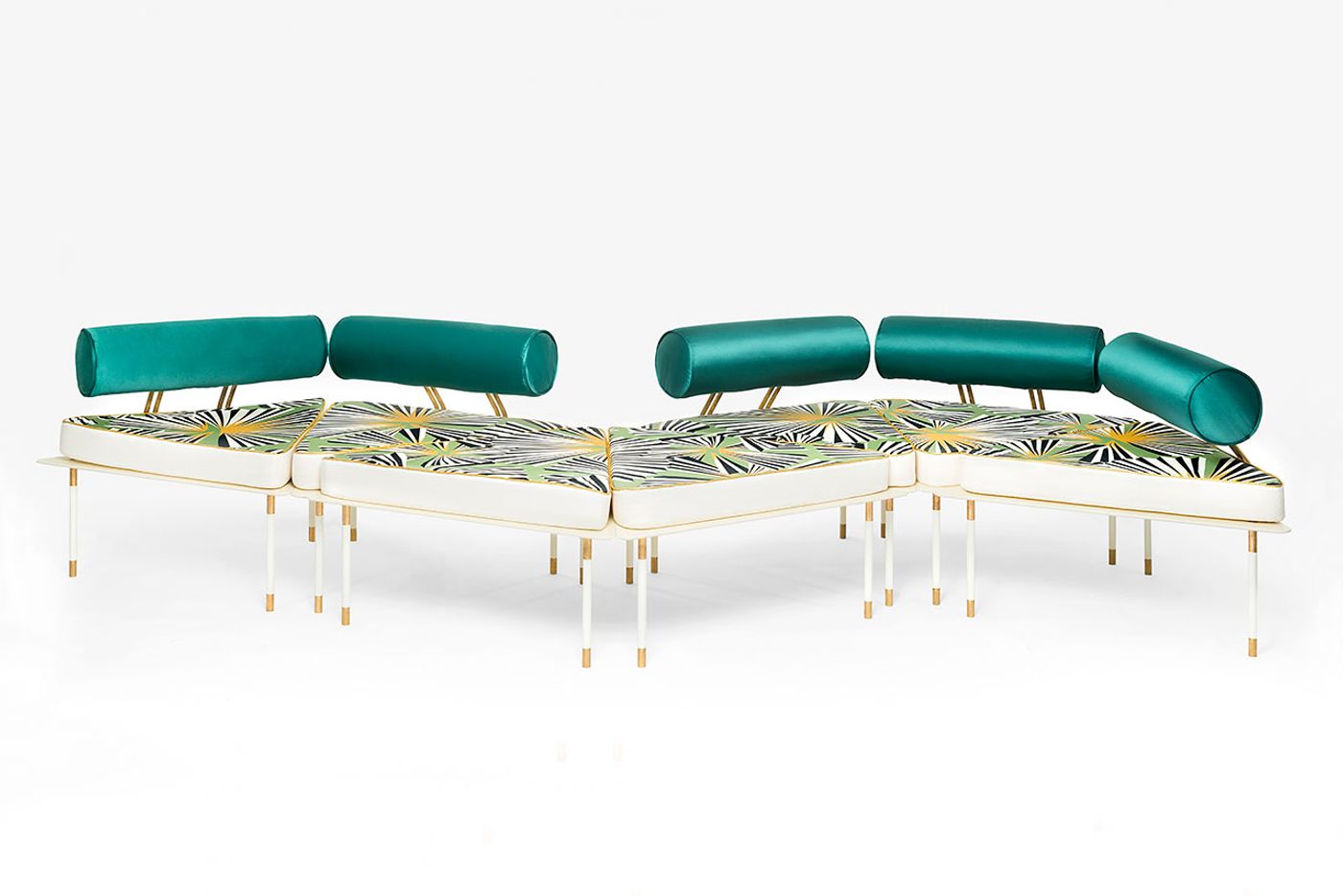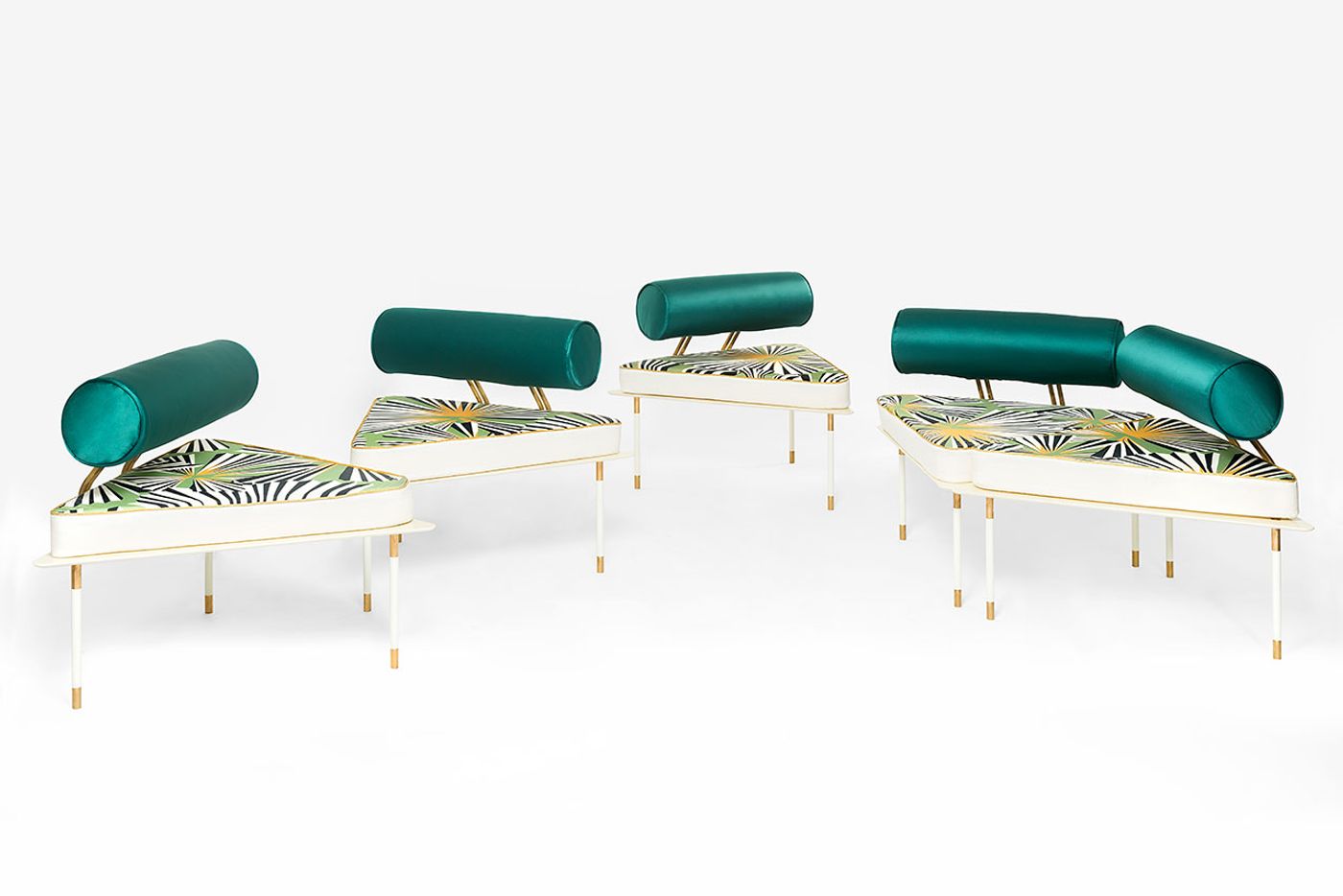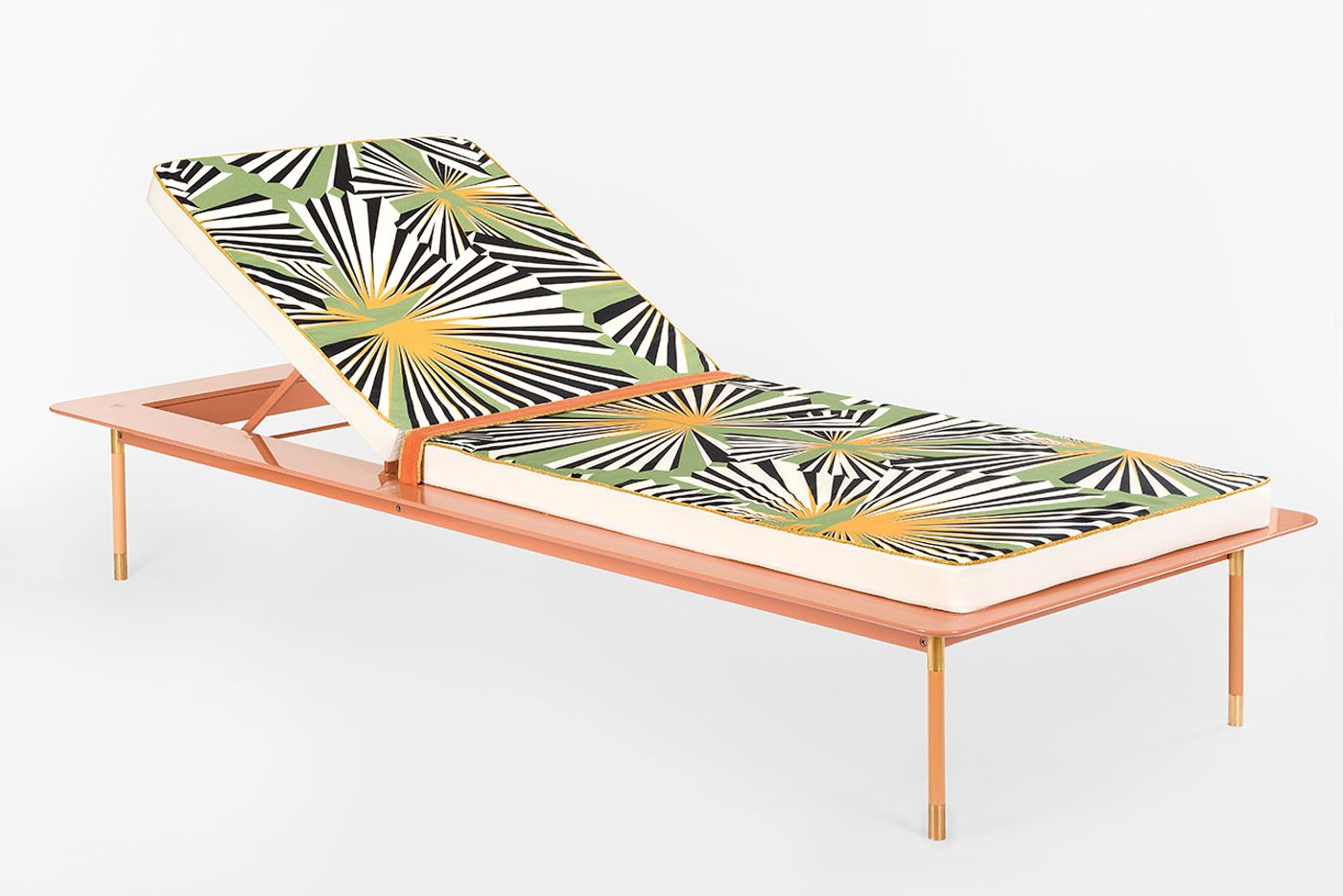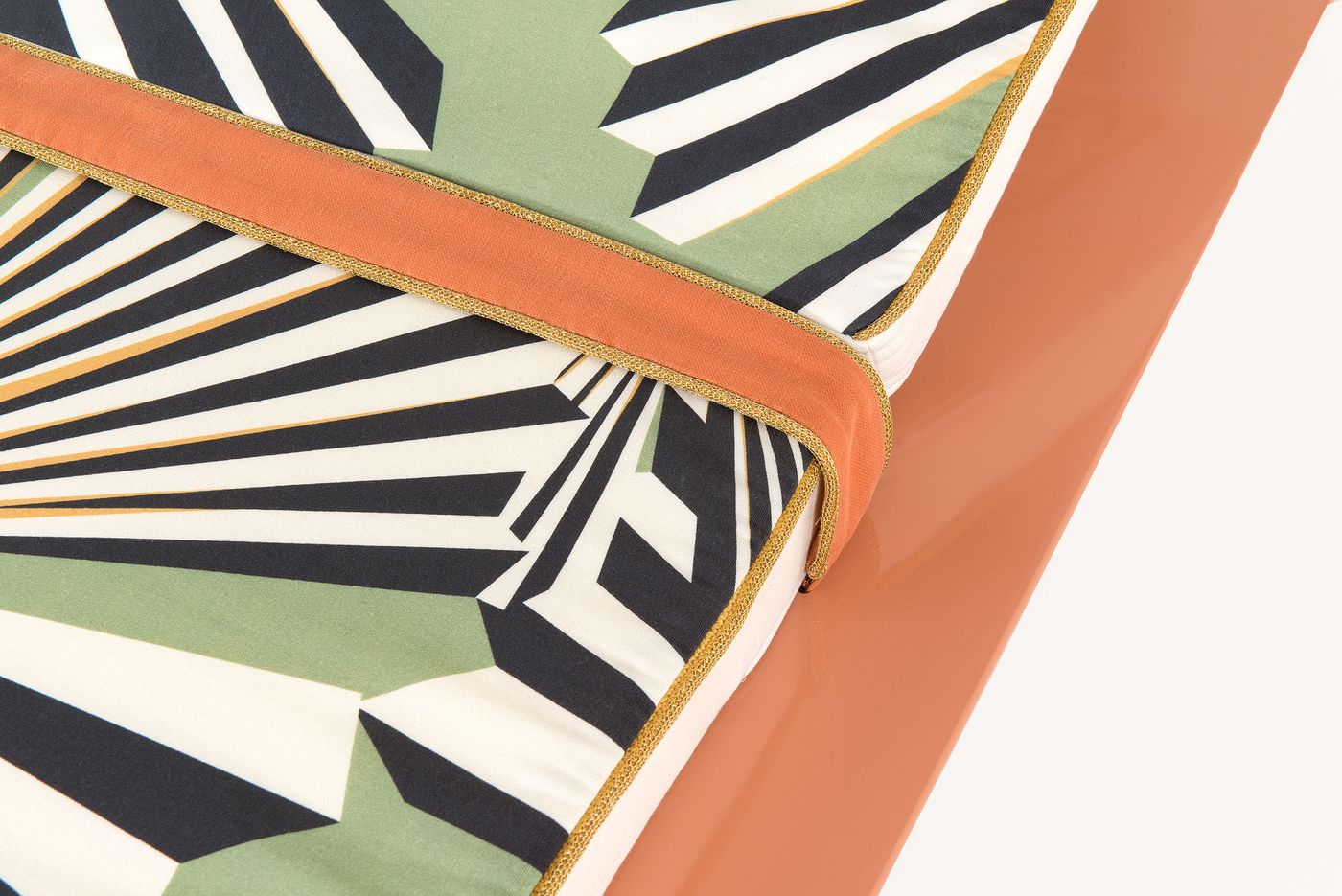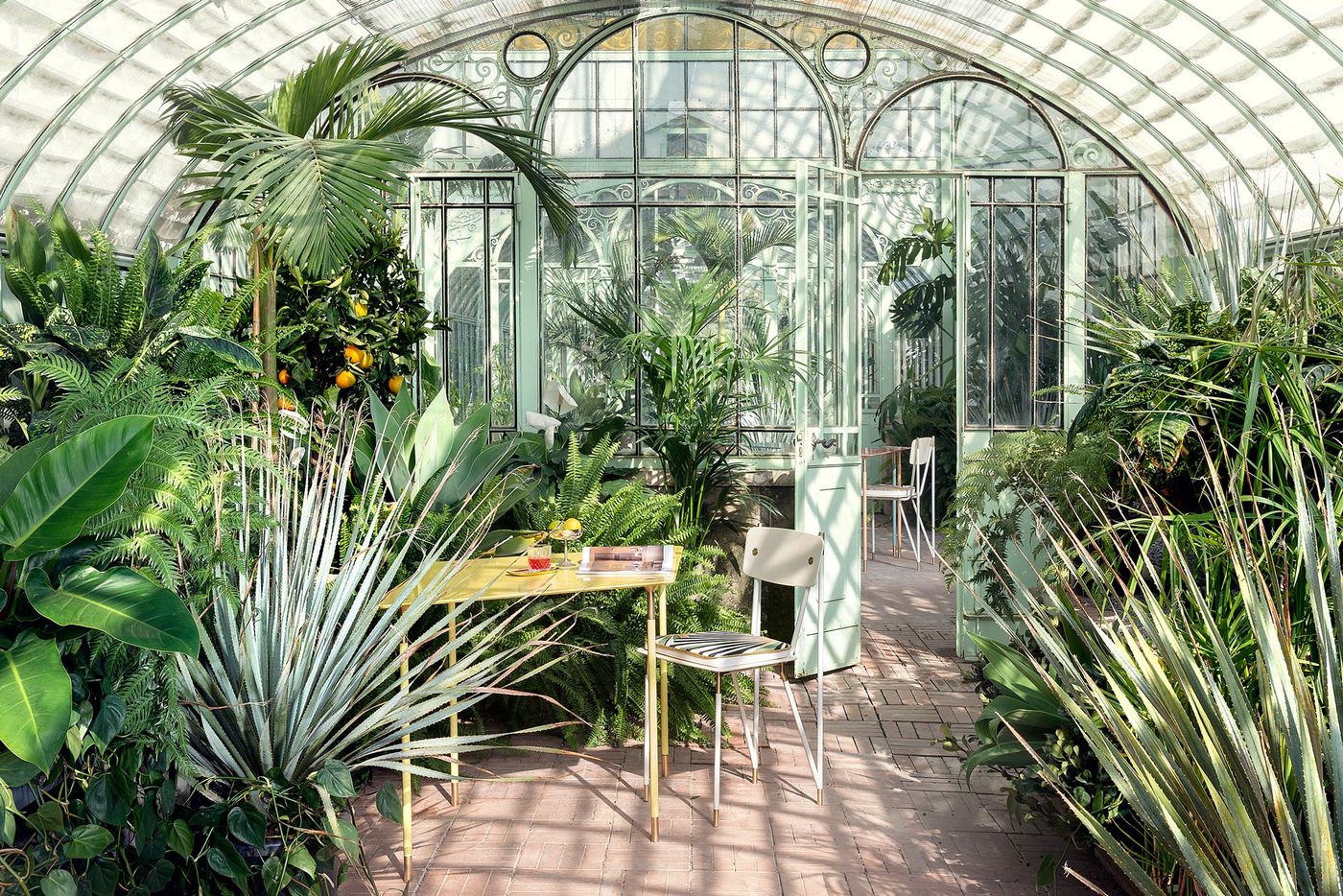
The Story-Telling Finesse of Derek Castiglioni's Gardens
Words by Eric David
Location
The Story-Telling Finesse of Derek Castiglioni's Gardens
Words by Eric David
“Show me your garden and I’ll tell you who you are”, English poet Alfred Austin once claimed and this is doubly true for Italian landscape architect Derek Castiglioni whose green projects not only speak of the people and brands that commissioned them but also of his own ideas, dreams and desires. Hailing from a family of landscapers, 35-year-old, Milan-based Castiglioni, who defines himself as an outdoor space designer, has been making his own mark by combining a rigorously architectural sensibility with an indulgent sense of nostalgia. This idiosyncratic approach has endeared him with Milan’s design scene as attested by recent projects such as the rooftop restaurant of menswear label Dsquared2, a suspended garden for the Stella McCartney boutique, and the terraced garden for Dimore gallery. Castiglioni’s work is not limited to urban projects and private residences though; outside the city, he has worked on the landscaping of Mario Botta’s Campari Headquarters at Sesto San Giovanni, the grounds of a Barolo winery, and the gardens of a luxury estate in Porto Cervo, Sardinia, including a magnificent green wall.
Recently Castiglioni unleashed another side of his creativity by designing Aquiloni, his debut collection of outdoors furniture. Channeling the pristine elegance of mid-century modernism, the garden-ready chairs, tables, and chaise-longues are simple in form but rich in detail, and feature imaginative outdoor fabrics. Yatzer talked to Castiglioni about his furniture collection, his passion for landscaping and his favorite plant.
(Answers have been condensed and edited for clarity.)

Derek Castiglioni portrait. Photo by Maria Teresa Furnari.
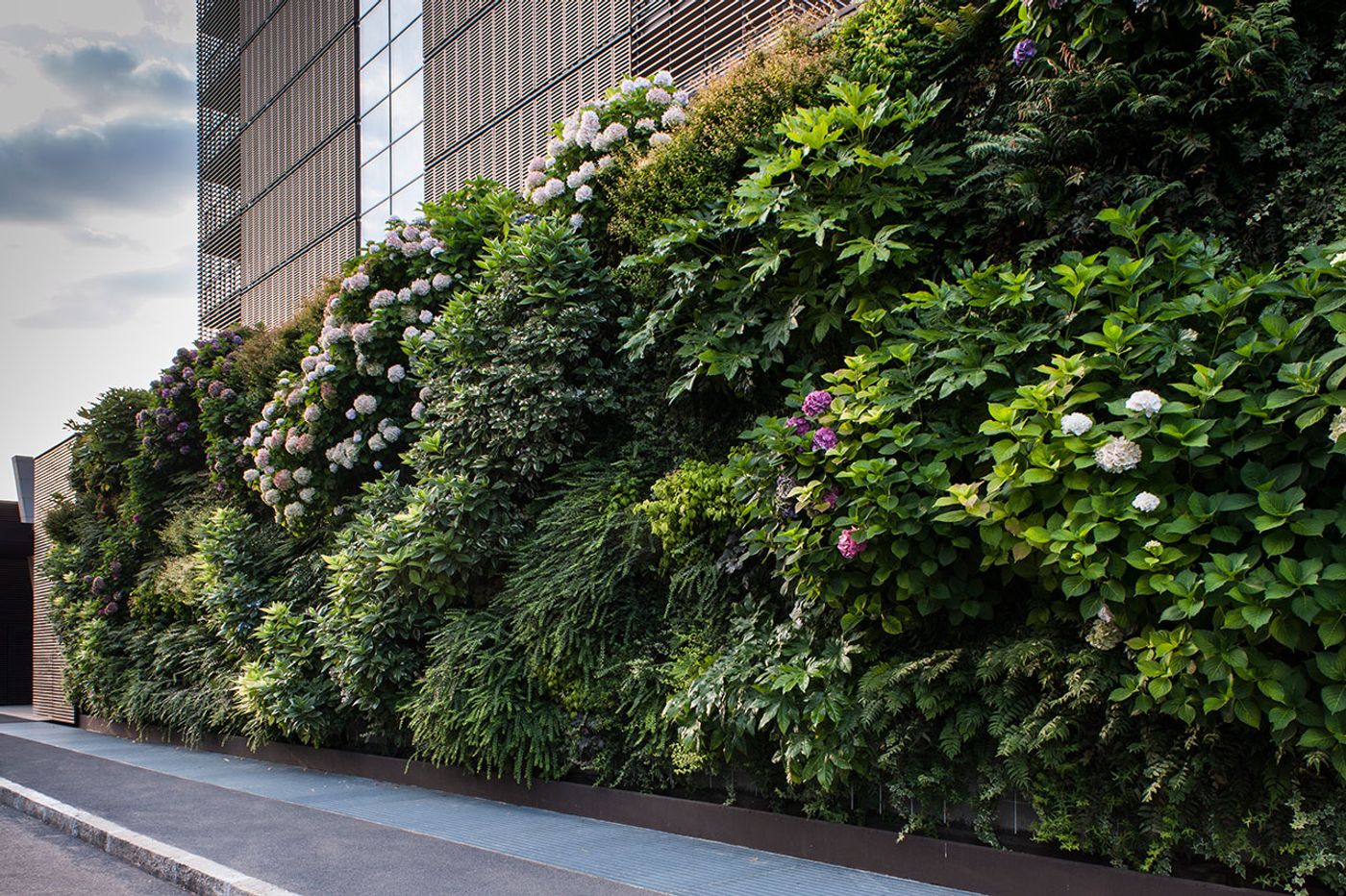
Torre Giax, 2015, Milan. Architectural Project: Stefania Beltrame Sandra Gelmetti Architetti Associati. Landscaping Project: Derek Castiglioni. Photo by Paolo Pandullo.
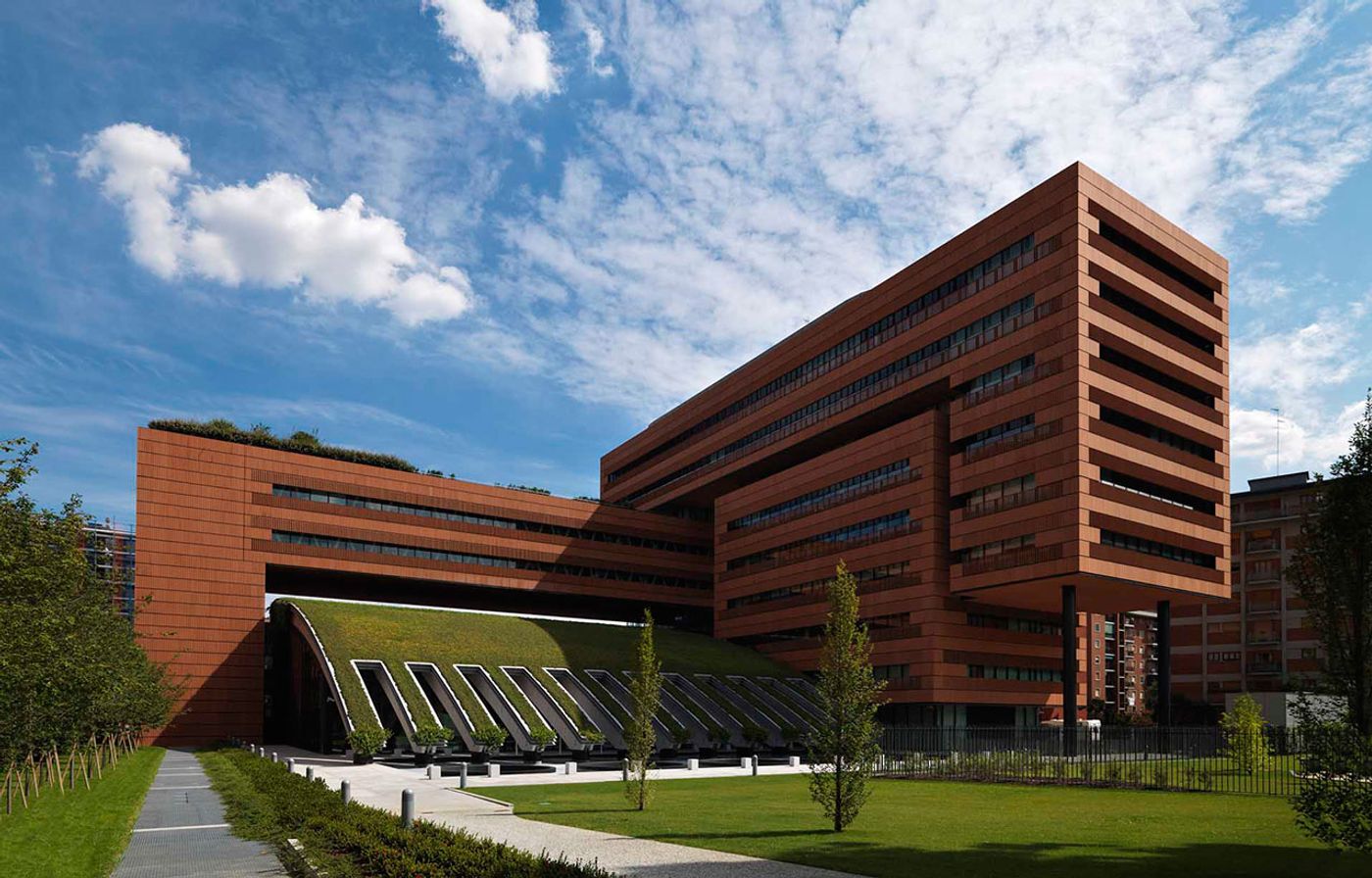
Campari Headquarters, Sesto San Giovanni (MI). Architectural Project: Mario Botta — Giancarlo Marzorati. Landscaping Project: Derek Castiglioni. Photo by Enrico Cano.
You were born into a family of landscape designers. How did this affect your own professional development? Was going into the family business always a given?
I was born into a family of builders going back to my great-grandfather. 25 years ago, the company changed direction and now specializes in landscaping such as green roofs, hanging gardens and green walls.
At the end of my architecture studies, my first thought was to carry on the building part of the family business, but things don’t always go your way. So I found myself working at the landscaping department of the company, which, I won’t lie, was a challenge. But I didn’t lose heart; I took it as an opportunity to make gardening a thing of my own. Since then I have been combining my “old” (architectural) knowledge with my family’s know-how, collaborating with several Italian and international architectural firms, and learning the secrets of the trade.
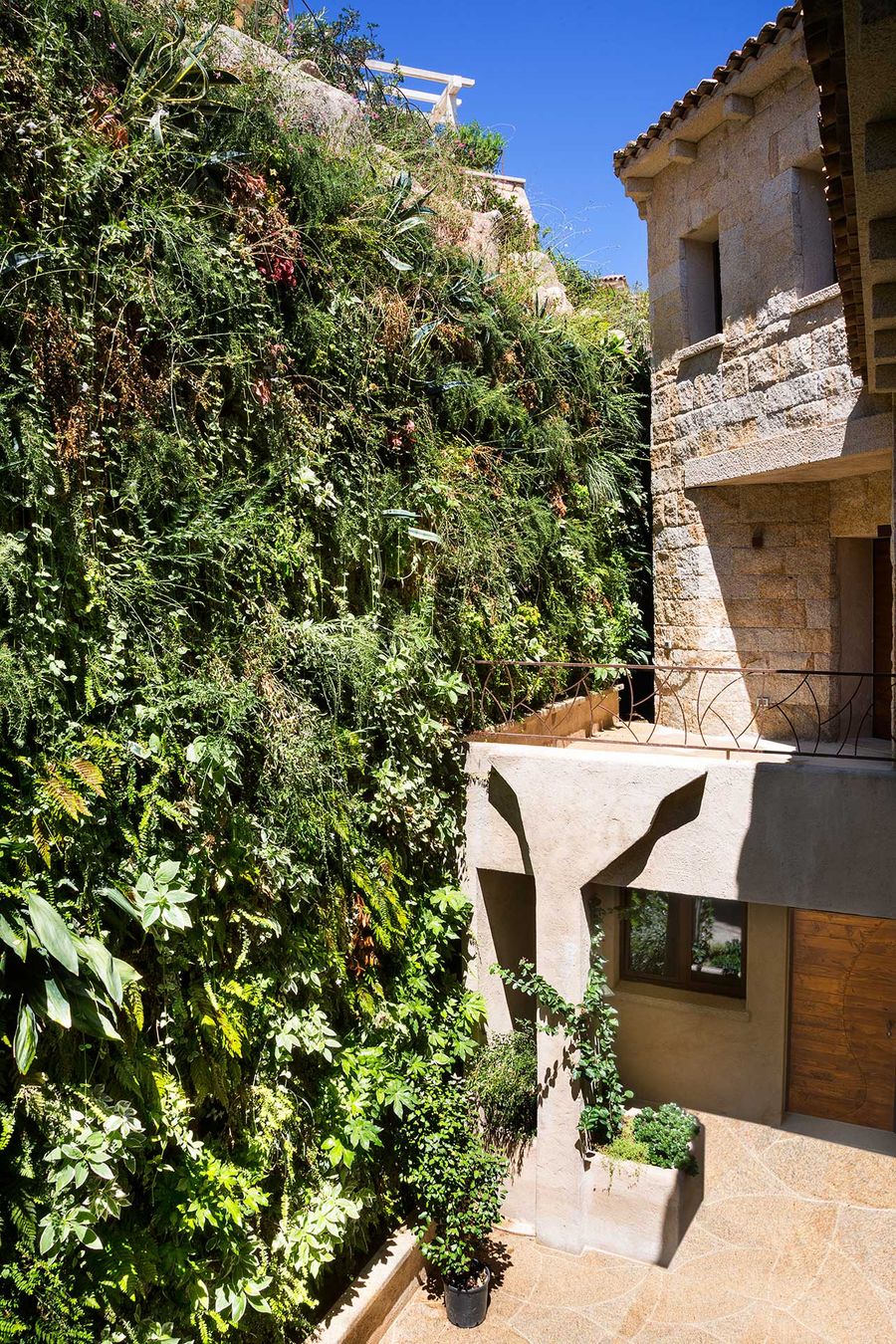
La Tiara di Cervo, Porto Cervo (OT). Architectural Project: Torno Team. Green Wall Project: Derek Castiglioni.
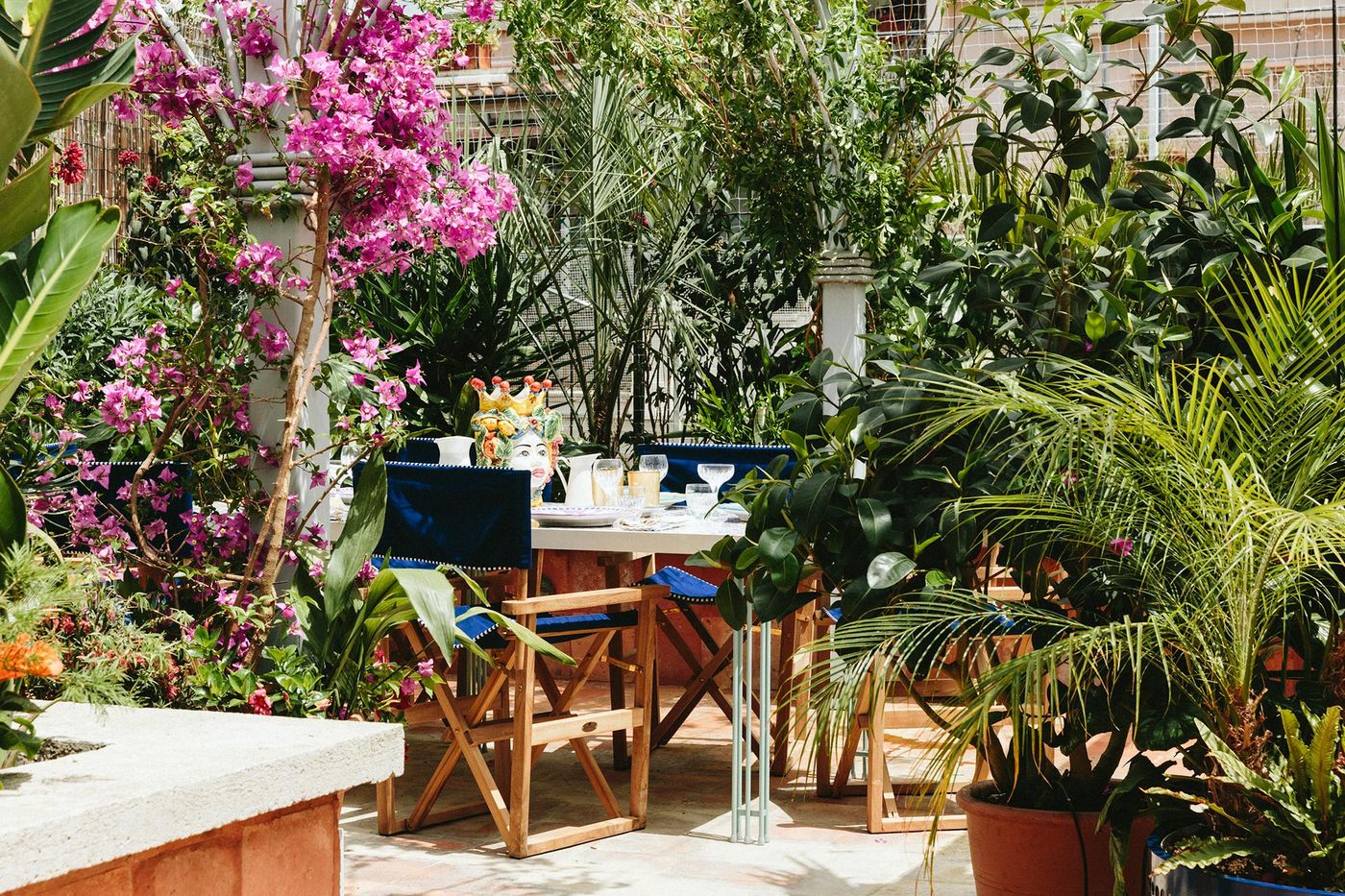
Sugokuii Terrace, Rome. Architectural Project: Derek Castiglioni. Landscaping Project: Derek Castiglioni. Fornitures Project: Derek Castiglioni. Photo by Matteo Bianchessi.
How do you approach each project? Do you have a clear picture of what you want to create from the start or does the design gradually evolves as you work on it?
I approach each project almost always from an architectural and design perspective, the gardening component comes about later and it is the element that perfectly closes the circle. So gardening and design go hand in hand and are of equal importance, one doesn’t disregard the other.
I have a clear vision from the beginning. While during the course of the work the initial concept is subject to change, from the start I have a clear idea of what I want to achieve, in what style, and with what plants and materials.
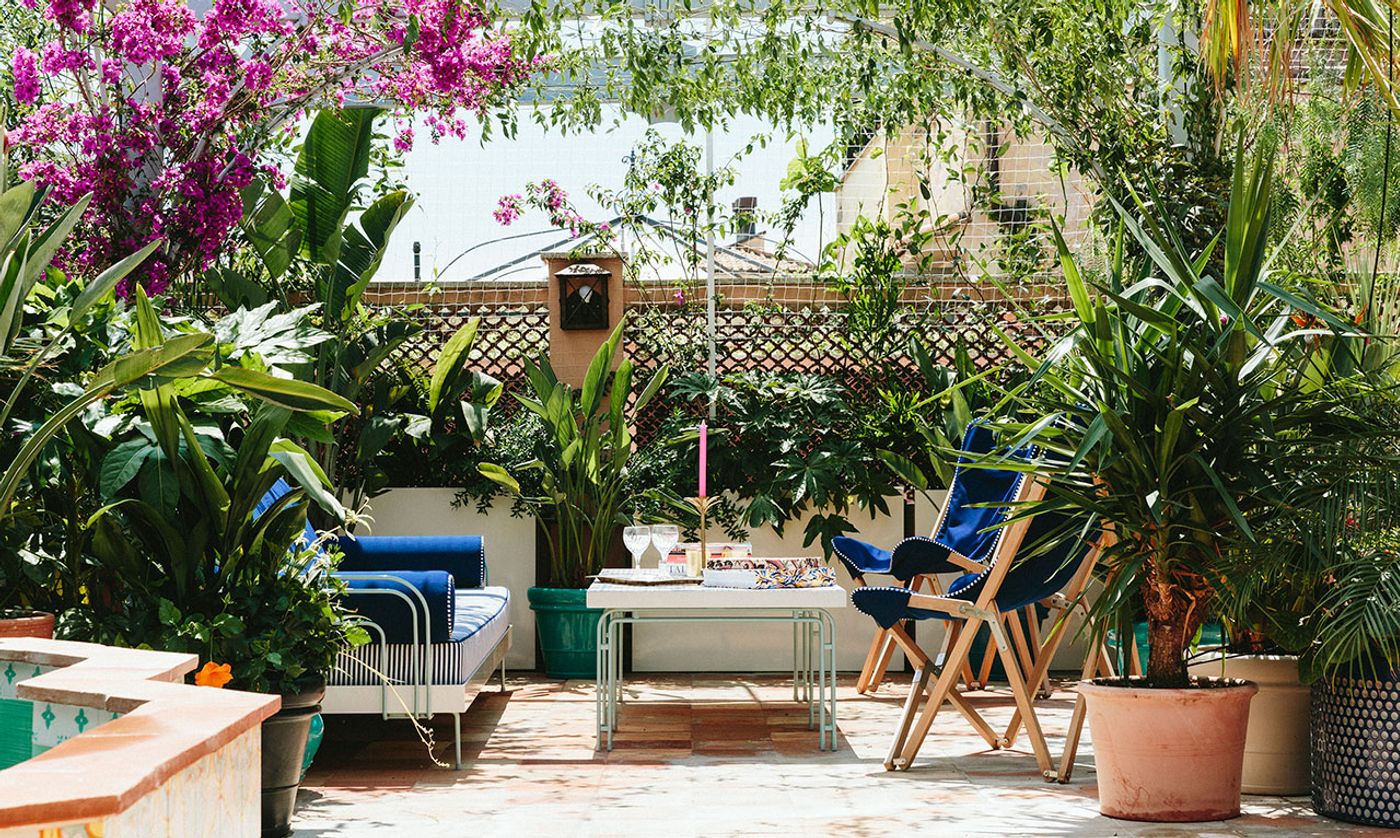
Sugokuii Terrace, Rome. Architectural Project: Derek Castiglioni. Landscaping Project: Derek Castiglioni. Fornitures Project: Derek Castiglioni. Photo by Matteo Bianchessi.
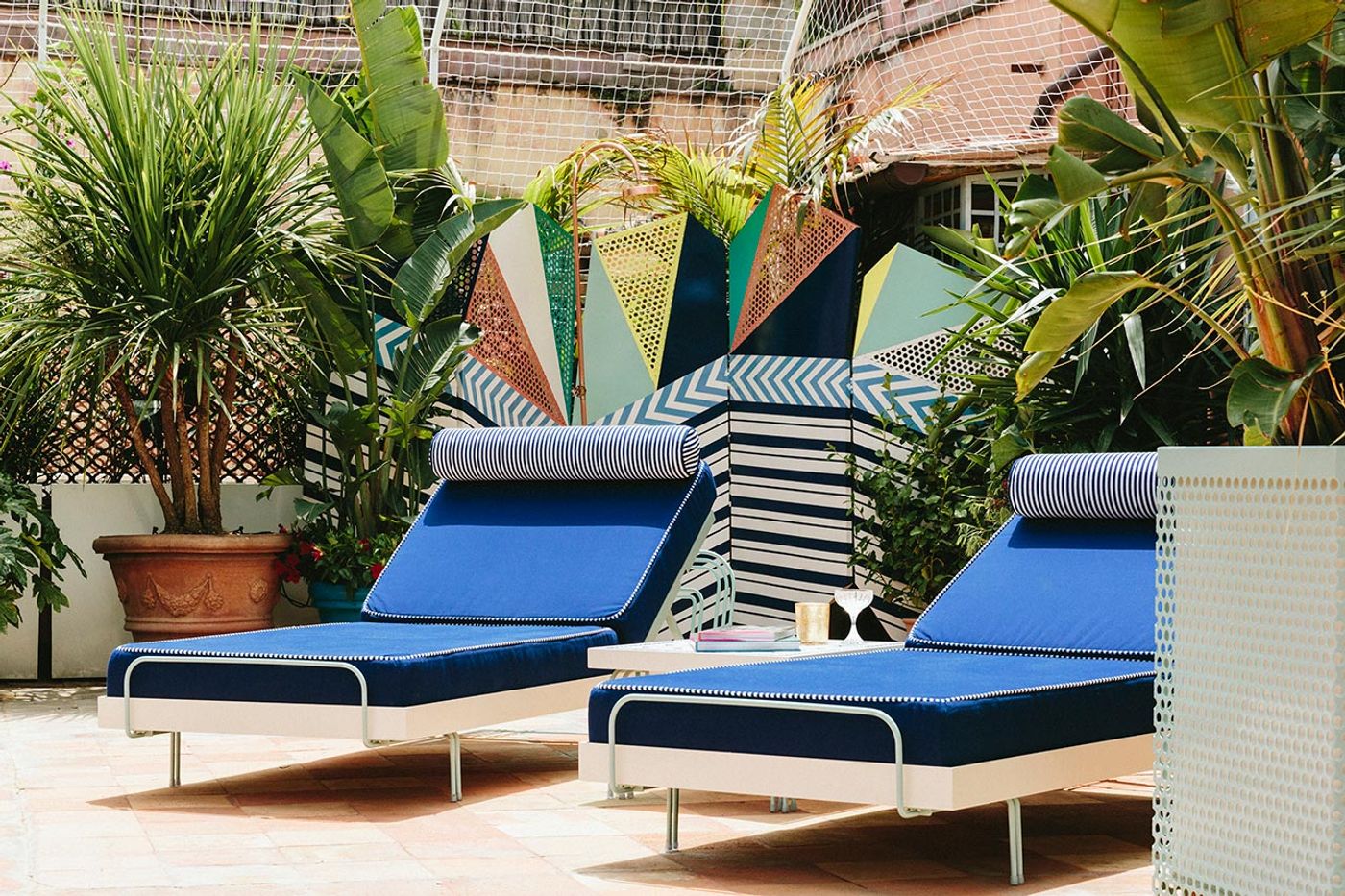
Sugokuii Terrace, Rome. Architectural Project: Derek Castiglioni. Landscaping Project: Derek Castiglioni. Fornitures Project: Derek Castiglioni. Photo by Matteo Bianchessi.
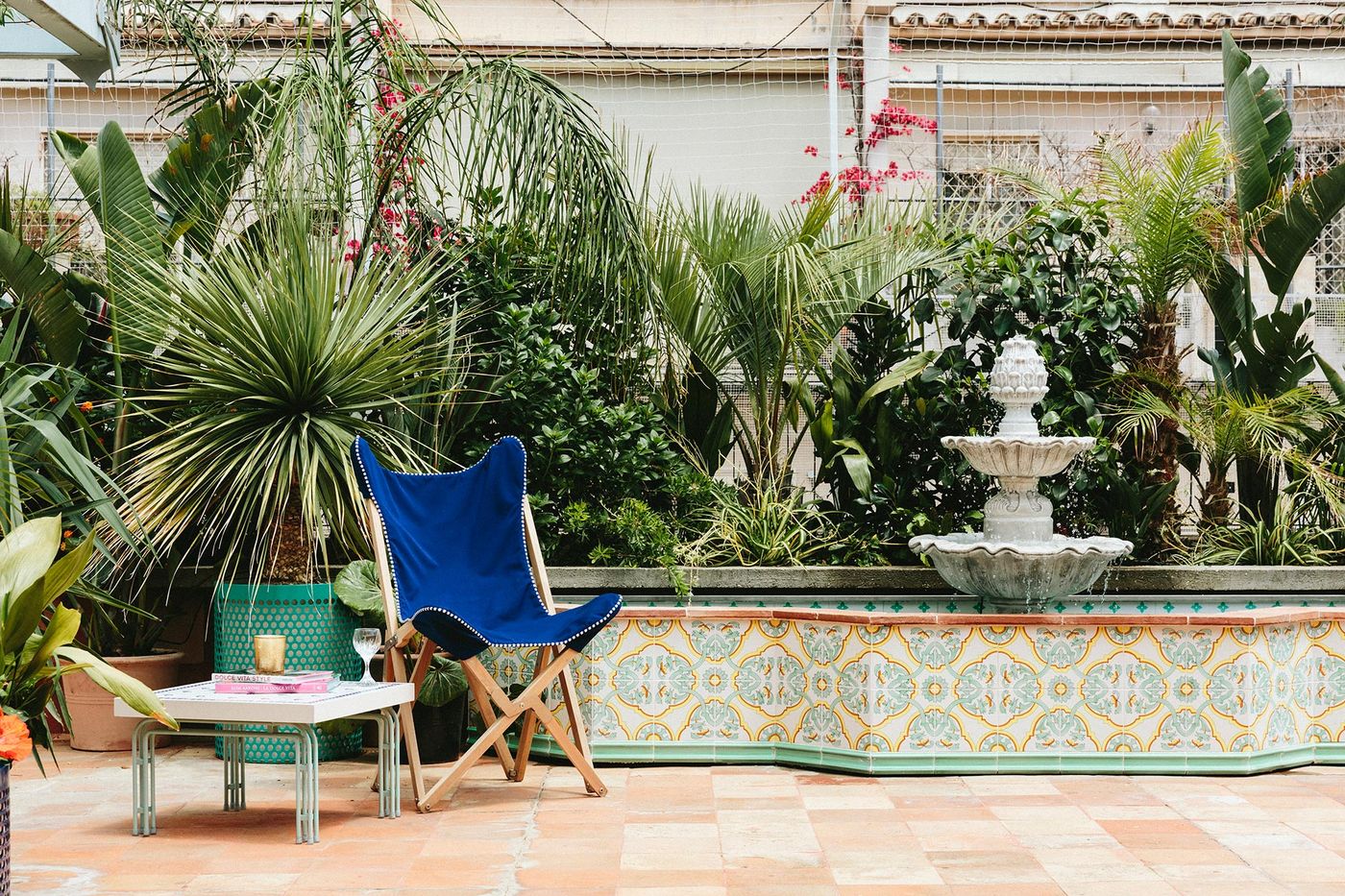
Sugokuii Terrace, Rome. Architectural Project: Derek Castiglioni. Landscaping Project: Derek Castiglioni. Fornitures Project: Derek Castiglioni. Photo by Matteo Bianchessi.
You have said that your gardens “are always about story-telling”. How does one tell a story with landscaping? How much of the story is about each particular project and how much is about your own creative journey?
I think that all projects tell a story, a story about the person who conceived, developed and realized them. My projects are a story about me, they speak of the vision I had when I first saw the location. But they also speak of the past as my inspiration usually comes from the gardens and architecture of the late 19th century and the first half of the 20th century, so there is a bit of a romantic history. Everything is obviously filtered through a contemporary lens but they also express my feelings and fantasies.

Stella McCartney Orticola, Milan. Landscaping Project: Derek Castiglioni.
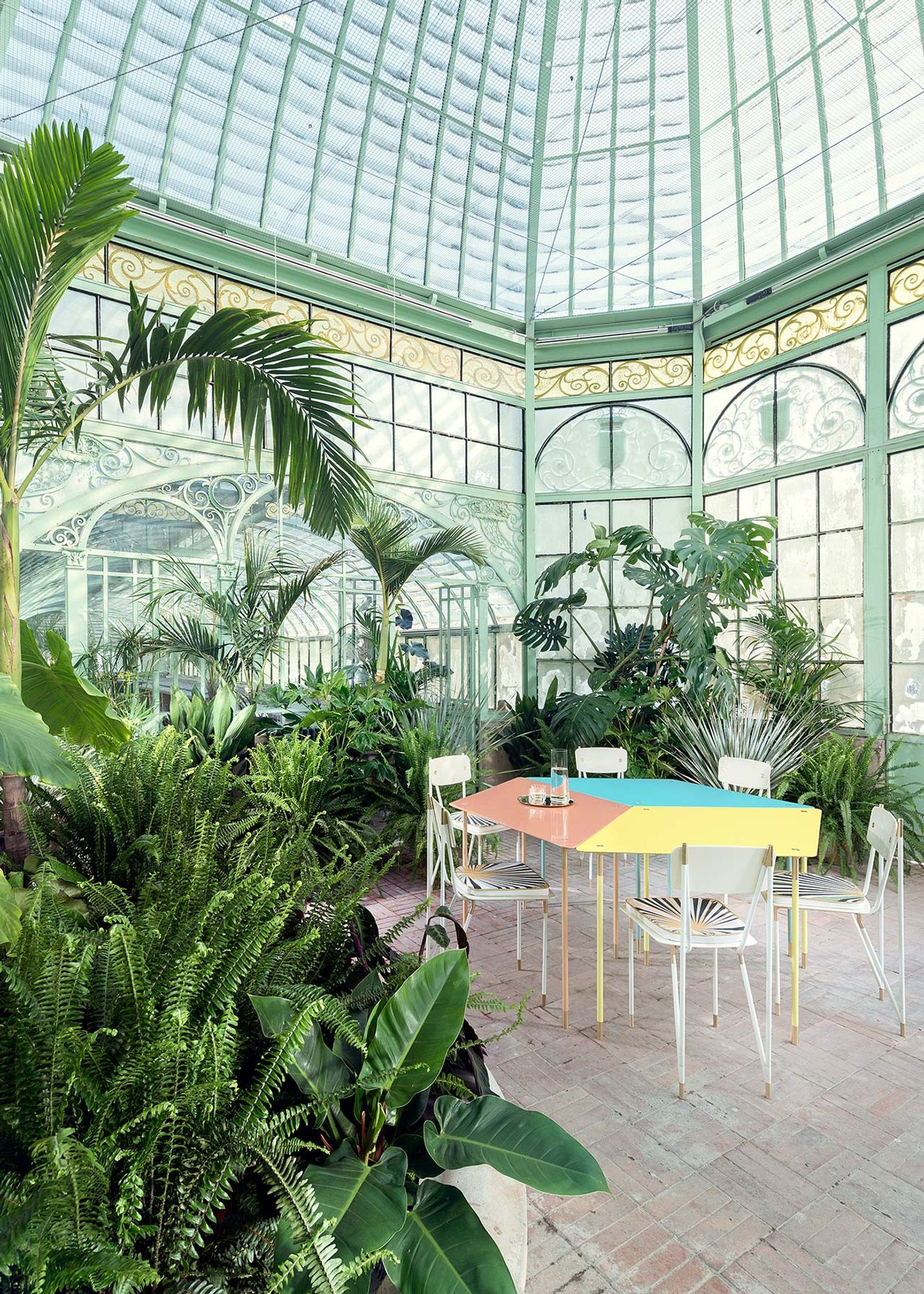
Aquiloni Collection, Milan. Landscaping Project: Derek Castiglioni. Furnitures: Derek Castiglioni. Photo by Maria Teresa Furnari.
You have been collaborating with several architectural and design studios. What kind of synergies are there in these collaborations and how do they inform and influence your work?
Yes, I’m working with several architecture and design firms. I really like teamwork because it promotes the exchange of ideas. Collaborations allow you to see things from other points of view and I think this is really important for my personal and professional growth. I find it fundamental to have an openness towards others. Of course it is far from certain that my ideas will change as a result, sometimes it happens, sometimes it doesn’t, but the exchange is always positive. In fact, I hope to increase my collaborations and I hope that more and more figures in the creative fields will think this way, teamwork should be the future.
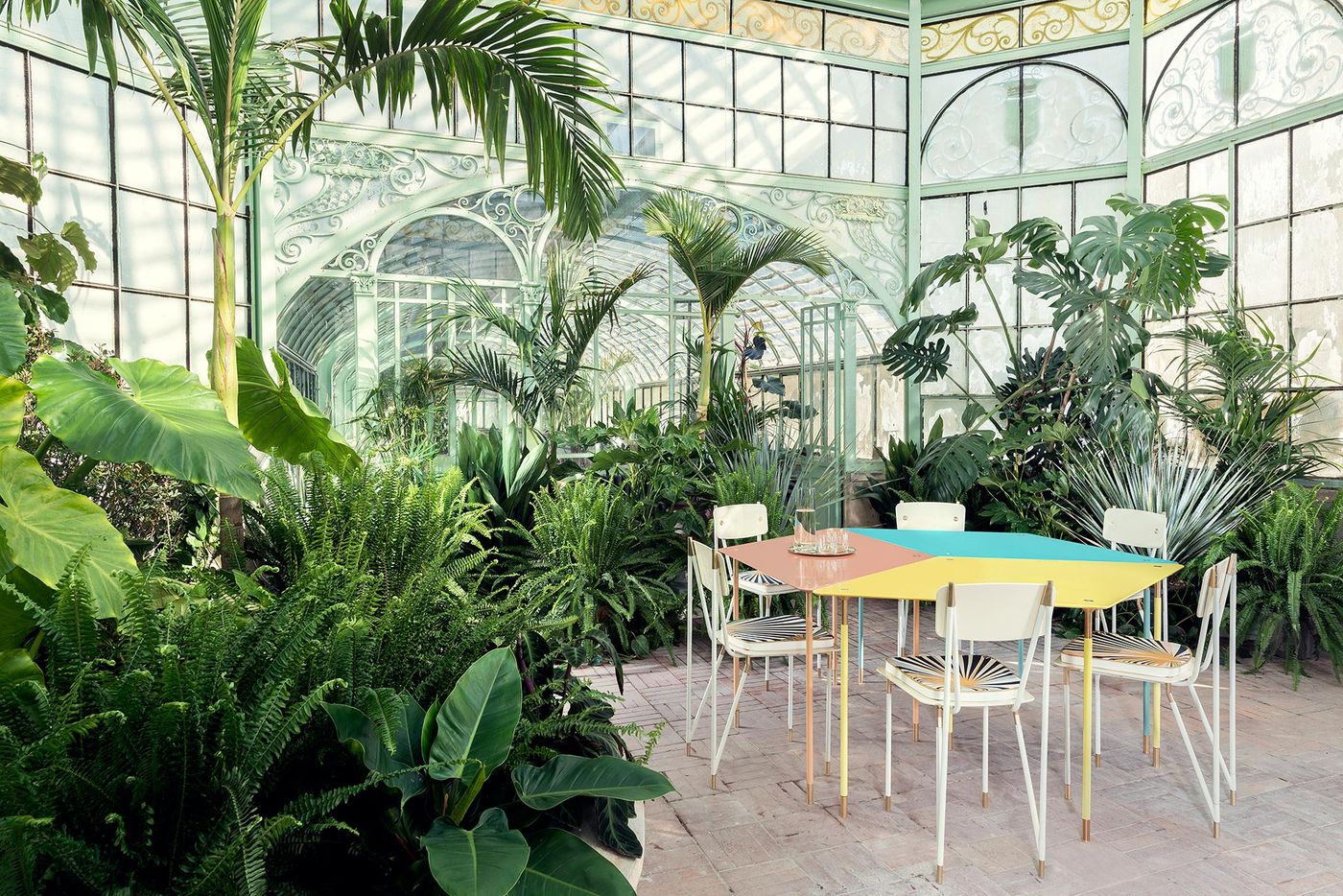
Aquiloni Collection, Milan. Landscaping Project: Derek Castiglioni. Furnitures: Derek Castiglioni. Photo by Maria Teresa Furnari.

Derek Castiglioni, Aquiloni Collection - Chair. 42 x 42 x 85 cm.
How different is developing a project for a well-known brand in comparison to a private commission?
There is not much difference between a project for a well-known brand or a private client. Sometimes an eponymous commission can place more pressure on you but it's all in the mind really. In both cases, you know that you have to give your best regardless of who the client is.
You have exhibited a particular affinity to the Licuala palm. Does its appeal stem from its exotic provenance or is it more a case of aesthetics?
Yes, I have a genuine affinity for the Licuala and plants like it but it’s not just a matter of aesthetics. The Licuala is one of those plants that were predominantly used in gardens at the beginning of the 20th century, mixed in with native plants as a symbol of economic well-being. These are the gardens which I am inspired by.
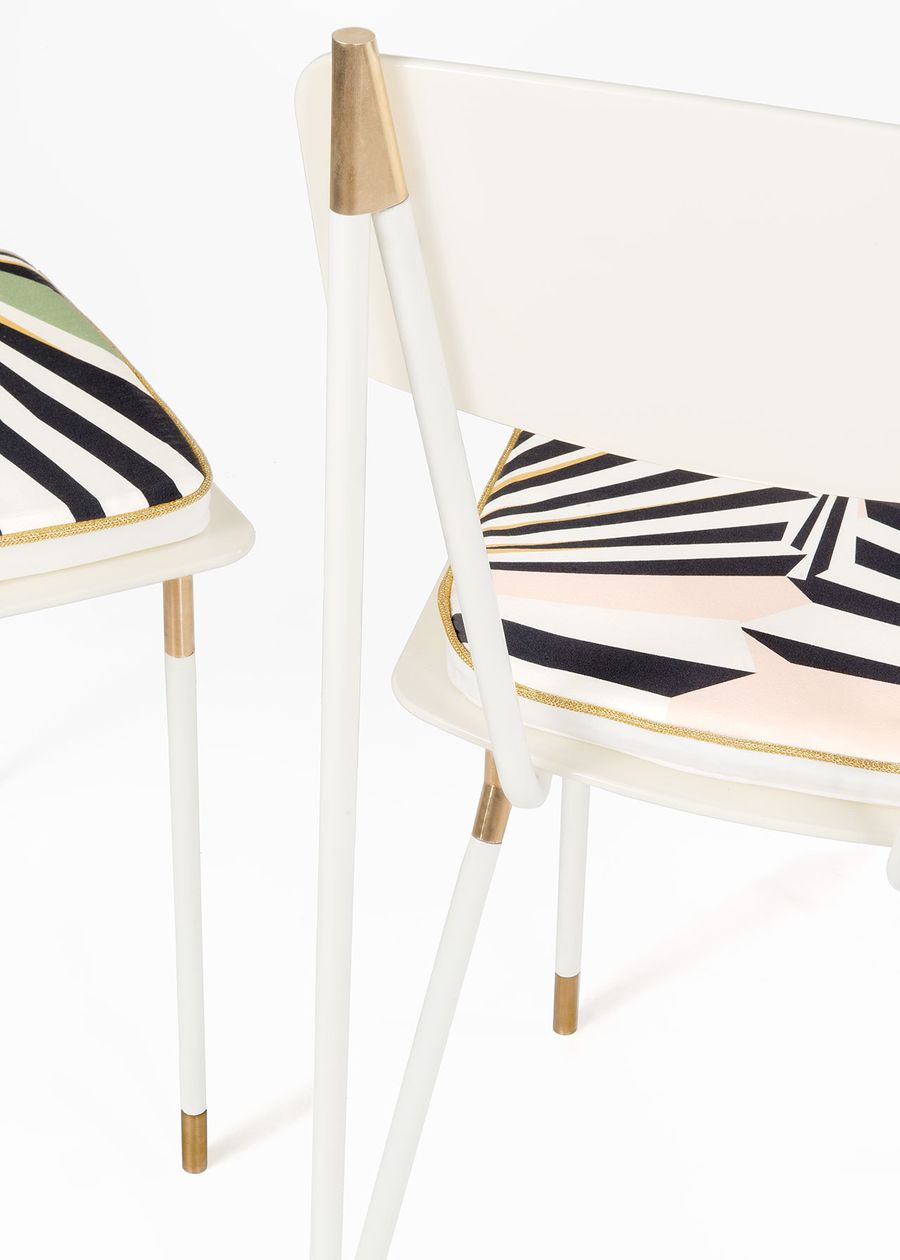
Derek Castiglioni, Aquiloni Collection - Chair. 42 x 42 x 85 cm.

Derek Castiglioni, Aquiloni Collection, Sofa. With Seatback: 96 x 90 x 70 cm. Without Seatback: 96 x 84 x 40 cm.
How did your debut collection of outdoor furniture come about?
My furniture collection was born out of my passion for design and the need to include -in my projects- pieces that are a slightly different from those available on the market. I had already designed furniture for a number of clients so launching my own line was an idea that had already been on my mind for some time now but it finally became a reality this year.
The collection has a distinct mid-century, modernist vibe. Where did you find inspiration for your designs?
Yes, as I have already mentioned it is one of the periods I am inspired by. Specifically for this collection the tone comes from mid-century French design pieces.Inspiration aside, the furniture’s design also had to take into account certain important technical requirements due to their outdoor use and this is where my technical background came into play. Many of the pieces are modular, which allows the same basic design to have different configurations, and have adjustable feet, essential for non-coplanar exterior surfaces. I think it’s a project that reflects many parts of me and my approach: mid-century design, elements related to greenery (Licuala) and an eye for technical aspects.
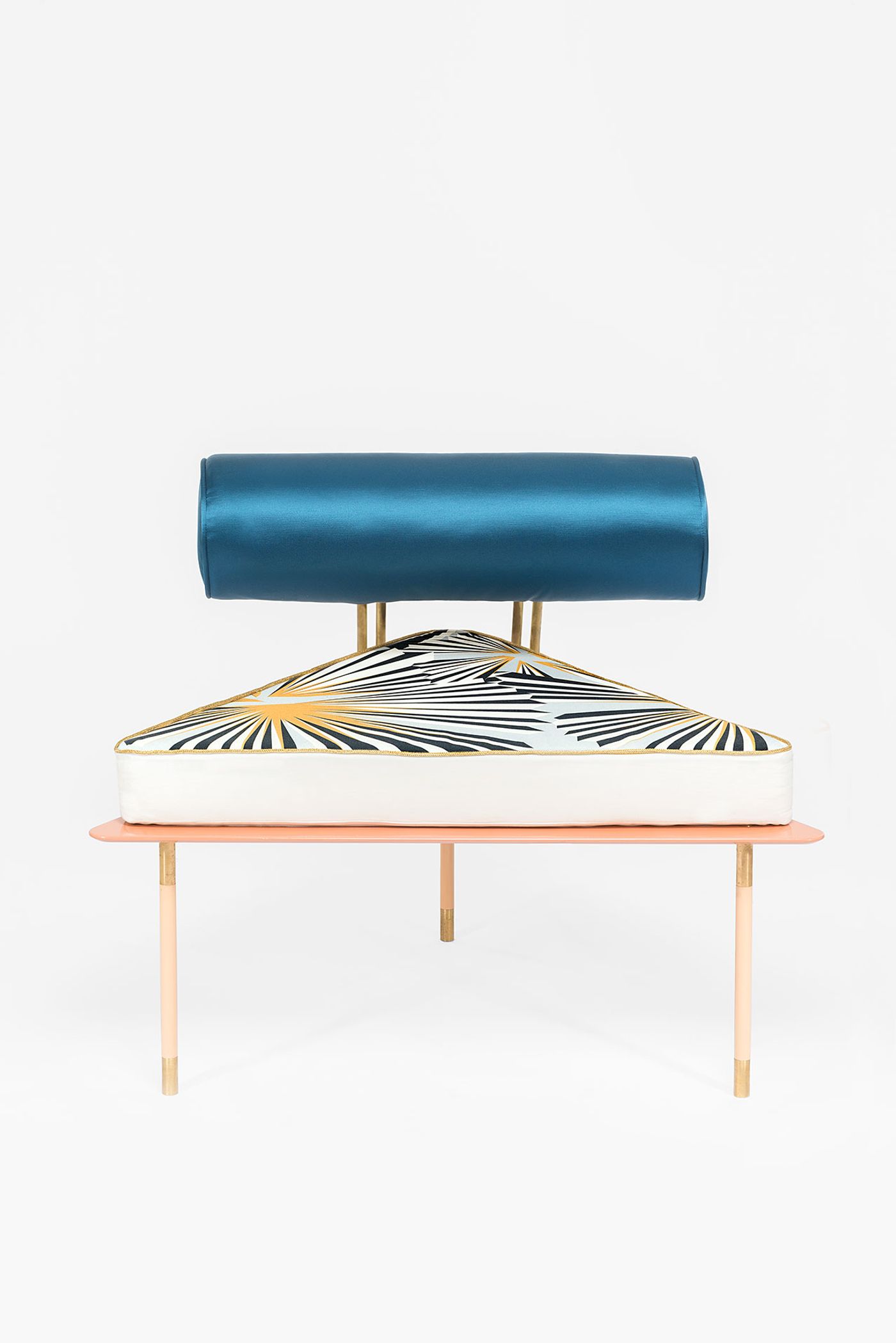
Derek Castiglioni, Aquiloni Collection - Armchair. 96 x 84 x 70 cm.
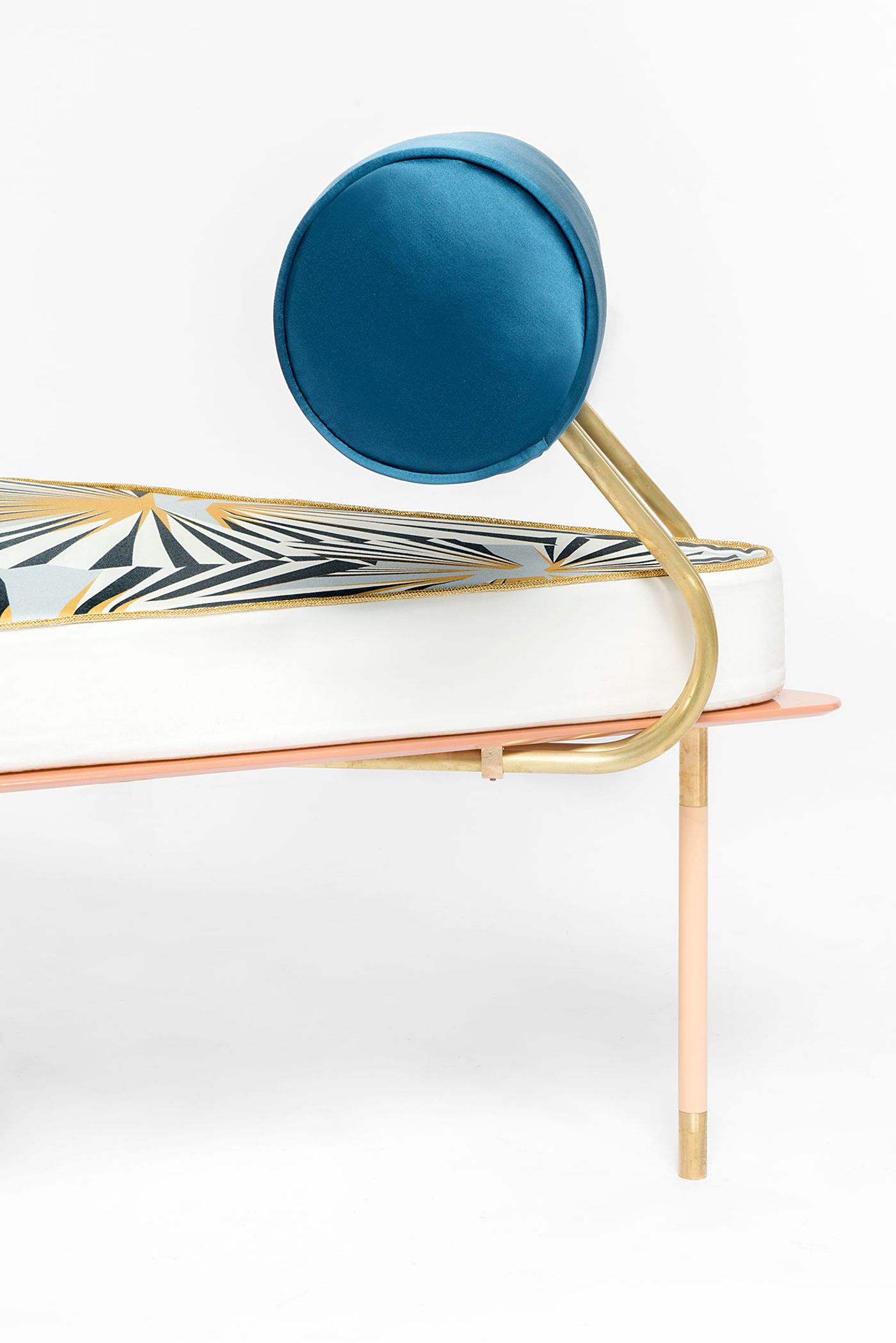
Derek Castiglioni, Aquiloni Collection - Armchair. 96 x 84 x 70 cm.

Derek Castiglioni, Aquiloni Collection - Armchair. 96 x 84 x 70 cm.
What is your relationship with social media? Useful tool or frivolous distraction?
Social media is a fantastic tool, as they allow you to reach a wide audience with just one click, without taking too much time out of your work. They also have a much lower cost than traditional advertising. They are a window onto the world that allows you to show who you are and what you do. In addition, they are also a useful tool to keep up with what is happening around you, build interesting connections and promote collaborations with people who you would otherwise not have had the opportunity to get to know.
What are you working on right now?
At the moment I’m working on my new furniture collection and on several projects in Italy and abroad for private clients. Unfortunately I cannot reveal anything about them right now, the only thing I can say is stay tuned!

Aquiloni Collection, Milan. Landscaping Project: Derek Castiglioni. Furnitures: Derek Castiglioni. Photo by Maria Teresa Furnari.

Aquiloni Collection, Milan. Landscaping Project: Derek Castiglioni. Furnitures: Derek Castiglioni. Photo by Maria Teresa Furnari.
